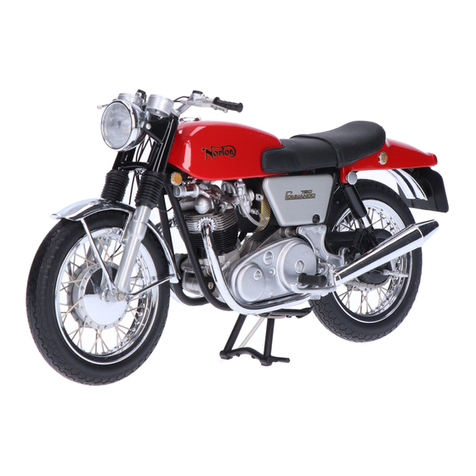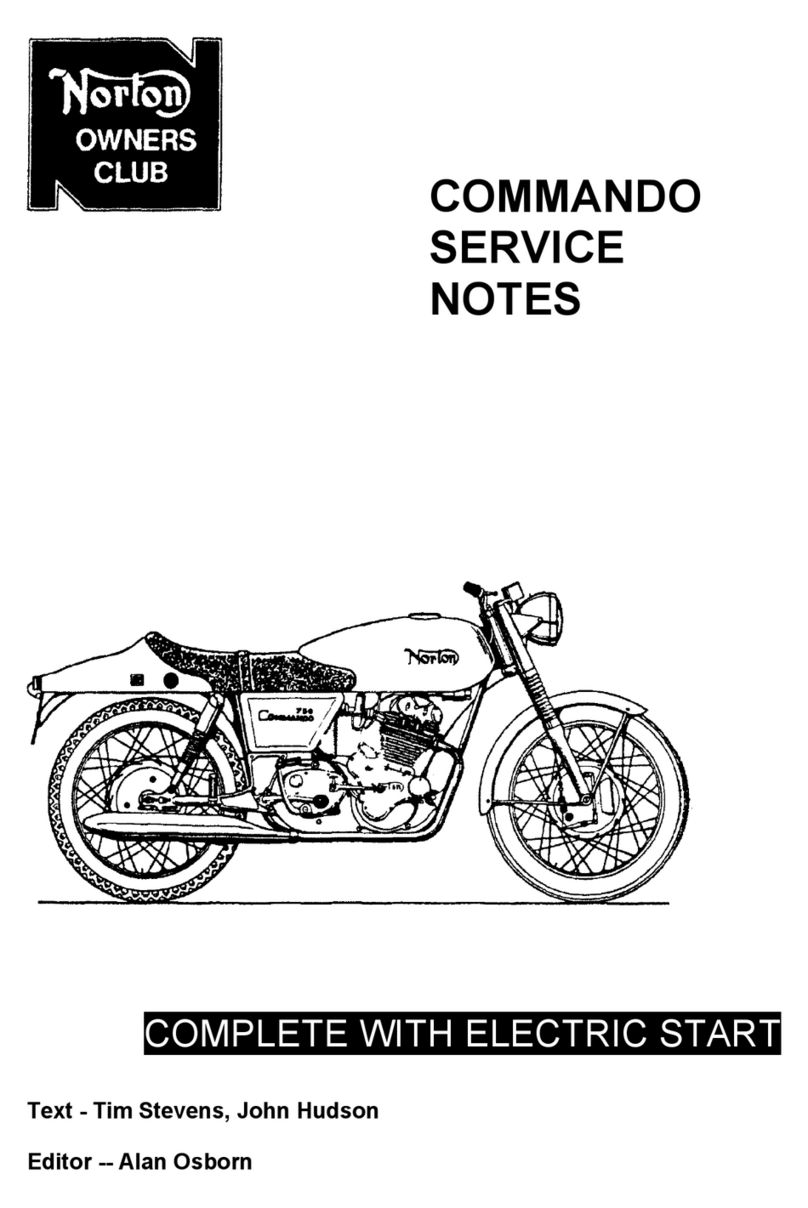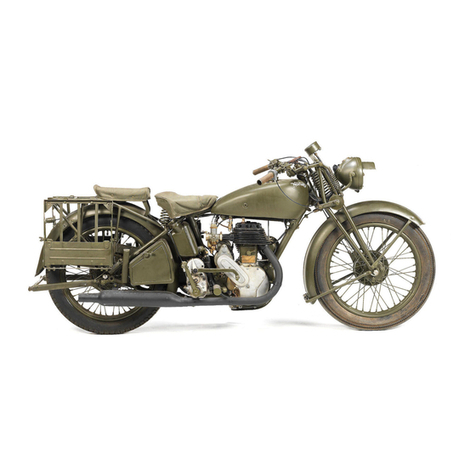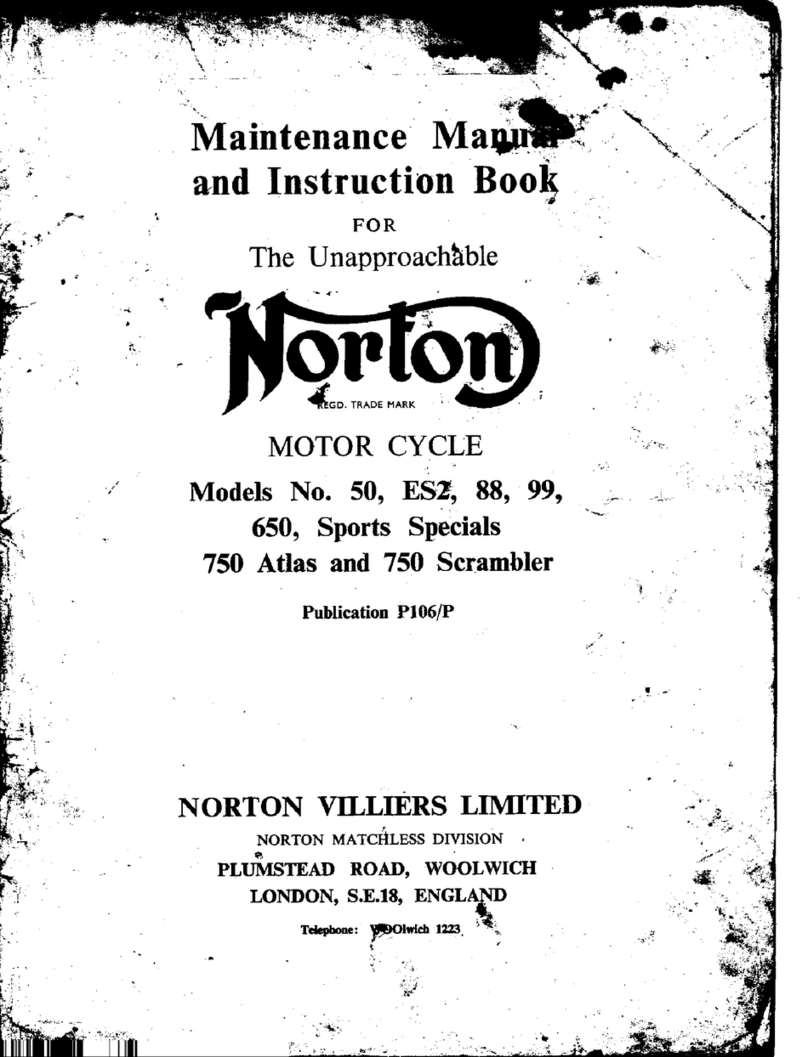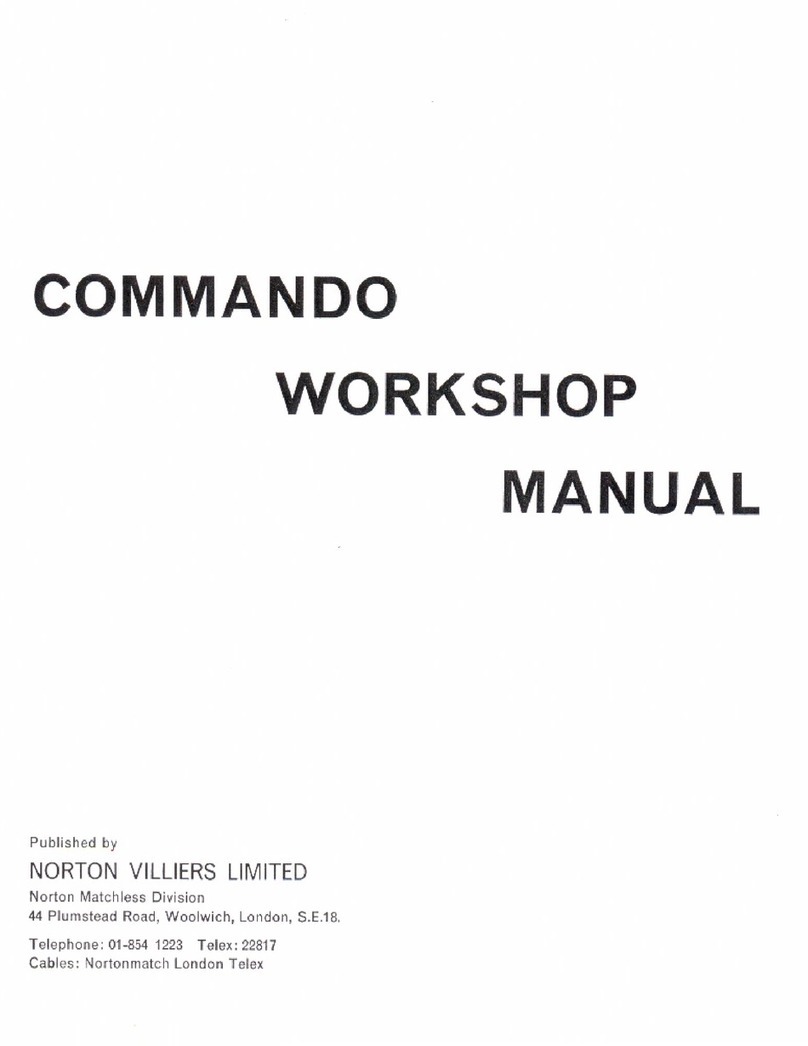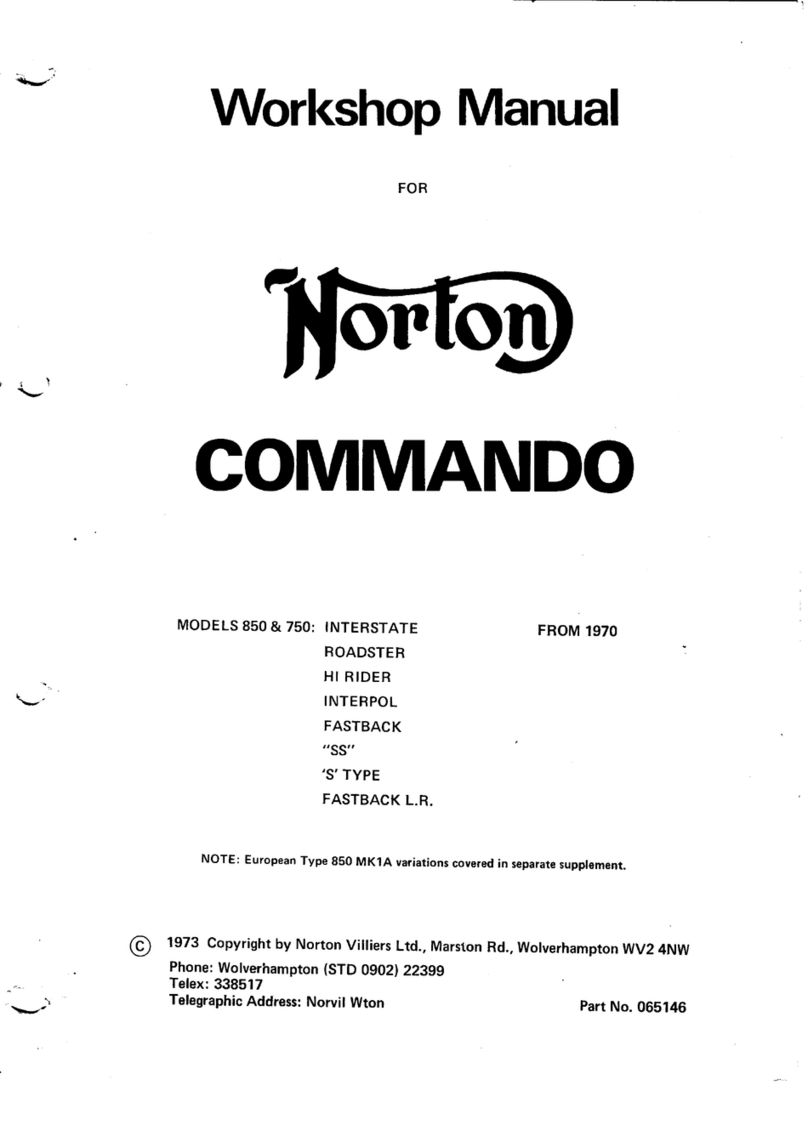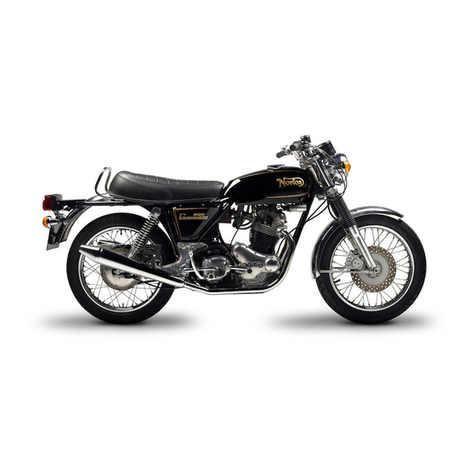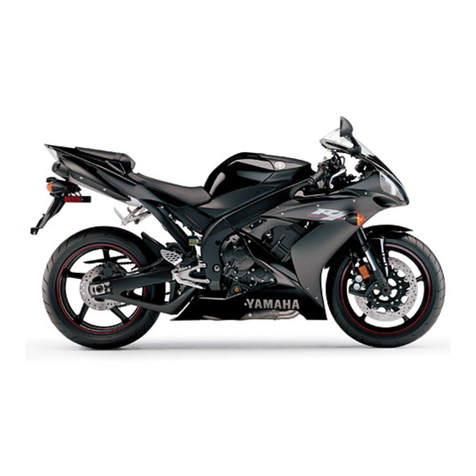
10
Force: Common sense should dictate how much force is necessary in assembly and disassembly. If a
part seems especially difficult to remove or install, stop and examine what may be causing the
problem. Whenever tapping is necessary, tap lightly using a rubber, wooden or plastic-faced mallet.
Use an impact driver for screws (particularly for the removal of screws held by a locking agent) in
order to avoid damaging the screw heads.
Edges: Watch for sharp edges, especially during major engine disassembly and assembly. Protect
your hands with gloves or a piece of thick cloth when lifting the engine or turning it over.
High-Flash Point Solvent: A high-flash point solvent is recommended to reduce fire danger. A
commercial solvent commonly available in the UK is Silkolene (generic name). Always follow
manufacturer and container directions regarding the use of any solvent.
Gasket, O-Ring: Do not reuse a gasket or O-ring once it has been in service. The mating surfaces
around the gasket should be free of foreign matter and perfectly smooth to avoid oil or
compression leaks.
Liquid Gasket, Non-Permanent Locking Agent: Follow manufacturer’s directions for cleaning and
preparing surfaces where these compounds will be used. Apply sparingly. Excessive amounts may
block engine oil passages and cause serious damage. An example of a non-permanent locking agent
commonly available in the UK is Threebond.
Press: A part installed using a press or driver, such as a wheel bearing (hub bearing), should first be
coated with oil on its outer or inner circumference so that it will go into place smoothly.
Ball Bearing, Needle Bearing: Do not remove a ball bearing or a needle bearing unless it is
absolutely necessary. Replace any ball or needle bearings that were removed with new ones, as
removal generally damages bearings. Install bearings with the marked side facing out applying
pressure evenly with a suitable driver. Only press on the race that forms the press fit with the base
component to avoid damaging the bearings. This prevents severe stress on the balls or needles and
races, and prevents races and balls or needles from being dented. Press a ball bearing until it stops
at the stop in the hole or on the shaft.
Oil Seal and Grease Seal: Replace any oil or grease seals that were removed with new ones, as
removal generally damages seals. When pressing in a seal which has manufacturer’s marks, press it
in with the marks facing out. Seals should be pressed into place using a suitable driver, which
contacts evenly with the side of seal, until the face of the seal is even with the end of the hole.
Before a shaft passes through a seal, apply a little high temperature grease on the lips to reduce
rubber to metal friction.
Circlip, Retaining Ring: Replace any circlips and retaining rings that were removed with new ones, as
removal weakens and deforms them. When installing circlips and retaining rings, take care to
compress or expand them only enough to install them and no more.
Cotter Pin: Replace any cotter pins that were removed with new ones, as removal deforms and
breaks them.
Lubrication: Engine wear is generally at its maximum while the engine is warming up and before all
the rubbing surfaces have an adequate lubricative film. During assembly, oil or grease (whichever is
more suitable) should be applied to any rubbing surface which has lost its lubricative film. Old
grease and dirty oil should be cleaned off. Deteriorated grease has lost its lubricative quality and
